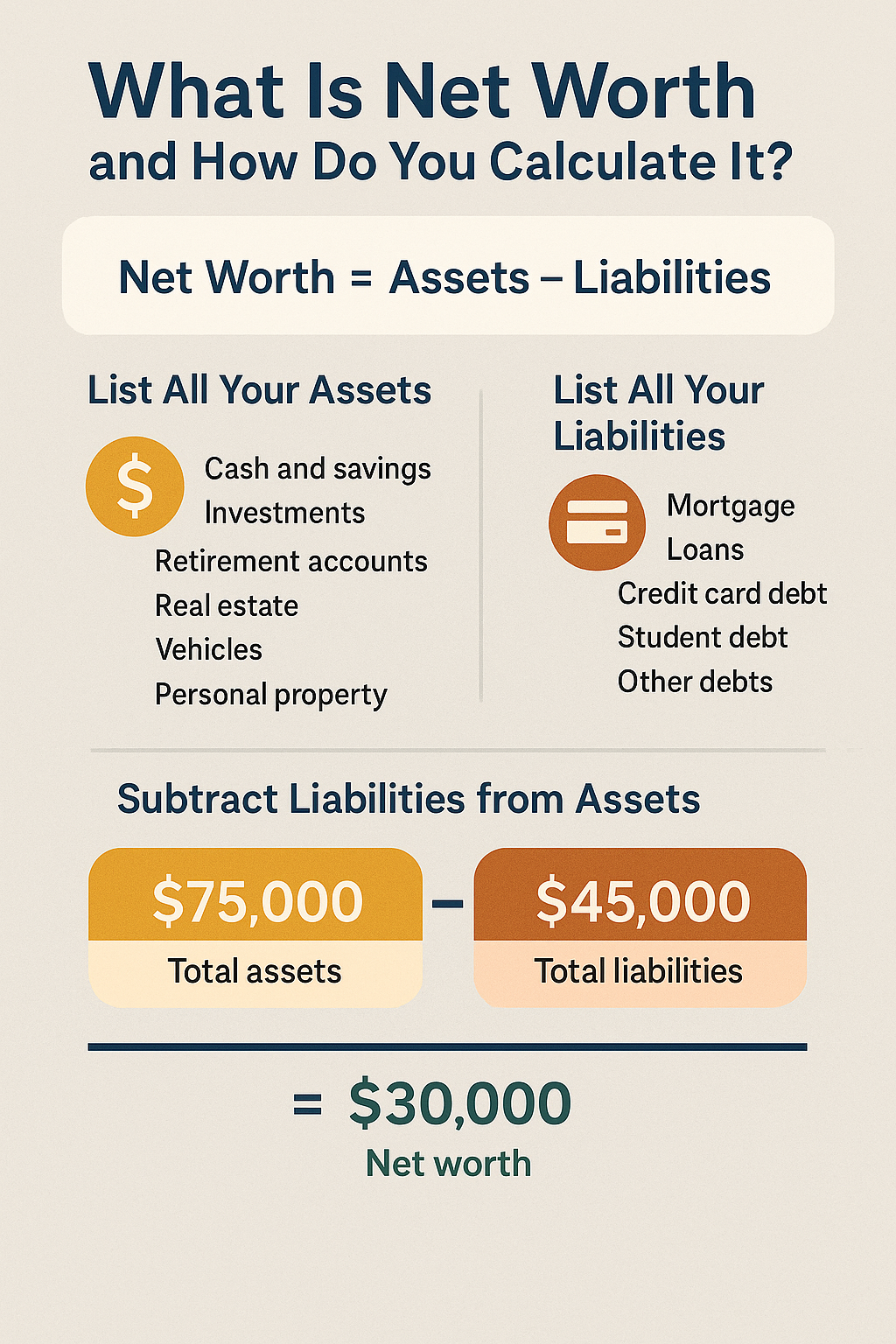When it comes to personal finance, your net worth is one of the most important numbers to know. It gives you a clear snapshot of your overall financial health—beyond just how much you earn or spend each month.
In this article, you’ll learn what net worth is, how to calculate it, and why tracking it regularly is essential to building wealth.
What Is Net Worth?
Net worth = What you own – What you owe
In other words, it’s the total value of your assets (things you own) minus your liabilities (debts you owe).
A positive net worth means your assets are greater than your debts. A negative net worth means you owe more than you own—which is common when starting out but something to improve over time.
Why Net Worth Matters
Your income tells you how much you earn. Your net worth tells you how much you keep.
Tracking your net worth helps you:
- Measure real financial progress
- See if you’re building wealth or accumulating debt
- Stay motivated to save and invest
- Make smarter decisions about spending and borrowing
It’s a simple, powerful way to stay on top of your financial life.
Step 1: List All Your Assets
Assets are anything you own that has financial value.
Common assets include:
- Cash and money in checking/savings accounts
- Retirement accounts (401k, IRA)
- Investments (stocks, mutual funds, crypto)
- Real estate (market value of your home)
- Vehicles (current market value)
- Personal property (art, jewelry, collectibles)
- Business ownership (if applicable)
Be realistic—use fair market value, not original purchase price.
Step 2: List All Your Liabilities
Liabilities are debts and financial obligations.
Common liabilities include:
- Mortgage balance
- Student loans
- Credit card debt
- Car loans
- Personal loans
- Medical bills
- Buy-now-pay-later balances
Use your current balance, not the original loan amount.
Step 3: Subtract Liabilities from Assets
Once you’ve listed everything:
Net Worth = Total Assets – Total Liabilities
Example:
- Total assets: $75,000
- Total liabilities: $45,000
- Net worth = $30,000
That $30,000 is your current financial position.
Step 4: Track It Over Time
Checking your net worth once a month or quarterly helps you stay focused and adjust as needed.
You might notice:
- Growth from saving and investing
- Drops if you take on new debt
- Fluctuations from market changes
Consistency is key. Don’t obsess over small changes—watch the long-term trend.
Tools to Calculate and Track Net Worth
- Spreadsheets (Excel, Google Sheets)
- Budgeting apps (YNAB, Mint, Monarch Money)
- Net worth trackers (Personal Capital, NerdWallet)
Choose the method that motivates you to check in regularly.
What If Your Net Worth Is Negative?
It’s more common than you think—especially if you have student loans or recently financed a car or home.
Don’t panic. Focus on:
- Paying off high-interest debt
- Building an emergency fund
- Increasing savings
- Growing your income
- Investing for the long term
Every payment and deposit helps shift the balance in your favor.
How to Grow Your Net Worth
- Spend less than you earn
- Pay off debt quickly
- Invest consistently
- Avoid lifestyle inflation
- Protect your assets with insurance
- Increase income through new skills or side work
Your net worth grows when you build assets and reduce debt—bit by bit.
Final Thoughts: Net Worth Is Your Financial Compass
Knowing your net worth helps you understand where you are—and where you want to go financially.
It’s not about comparing yourself to others. It’s about taking ownership of your money, tracking your growth, and making choices that support the life you want.
Start today. Know your number. And use it as a guide to a wealthier, more confident future.


Sem comentários